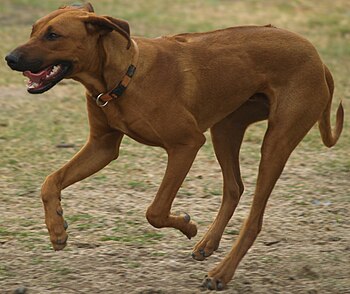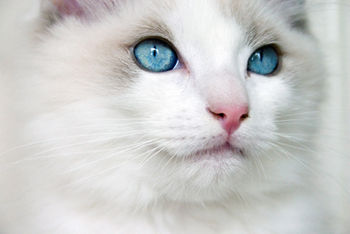Herding dogs encompass an entire group of dog breeds, all bred with specific characteristics. Herding dogs may be large or small, from the little Shetland Sheepdog ("Sheltie") to the big, bobtailed Old English Sheepdog. They must display the ability to keep other animals together, and this instinct is inborn.
 |
| A Pembroke Welsh Corgi. (Photo credit: Wikipedia) |
Owners who keep herding breeds as family pets speak of the dogs trying to keep children or other pets in a small group! Herding dogs might be trained to herd animals as diverse as ducks, sheep, goats, and cattle.
Interestingly, it's the behavior of the predatory wolf that is honed and refined to produce the herding dog's distinctive actions. The herding dog goes into hunting-type behavior with the animals it is herding - it circles the group, identifies and retrieves stragglers (whereas a wolf would single out a straggler to attack and kill), nips at the animals' heels, and/or "stares them down."
Herding dogs work from the rear or the front, with those that work from the rear engaging in the heel-nipping to push the animals onward, and those that work from the front using the stare or "strong eye" to turn the animals back.
What Breeds Are Herding Dogs?
The main dog breeds that are in the herding group are:
* Australian Cattle Dog
* Australian Shepherd
* Border Collie
* Belgian Sheepdog
* Bouvier des Flandres
* Cardigan Welsh Corgi
* Pembroke Welsh Corgi
* Collie (the "Lassie" type)
* German Shepherd
* Old English Sheepdog
* Puli
* Shetland Sheepdog ("Sheltie")
Some of these animals are kept as pets, too.
 |
| Shetland Sheepdog (Photo credit: Wikipedia) |
Training
Training herding dogs is an exacting task. While the breeds' instincts are there, trainers must refine and discipline these instincts to make the dogs into good herders. They usually begin with basic commands like any dog owner - sit, stay, heel, etc. But the herding dog trainer needs to make sure these commands are mastered, not optional.
Next, herding calls are added, such as "That'll do," and "Come by." "That'll do" is sort of like "at ease" - the dog is to stop performing the given command and return to the trainer. "Come by" tells the dog to turn clockwise.
When the dog is mature enough to handle these commands without hesitation or fear, the dog can slowly be introduced to the herd of animals. At first, the trainer uses a leash and a whistle to keep the dog in check. He or she trots along with the dog to show the dog the proper positions and directions. Gradually, the trainer will forego the leash and continue going with the dog. Then the trainer works toward giving the commands and standing by while the dog performs its herding duties.
















